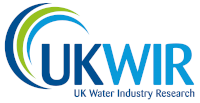Good news on Microplastics
28/11/2019
UKWIR commissioned the Centre for Ecology and Hydrology (CEH), a world- class research organisation focussing on land and freshwater ecosystems and their interaction with the atmosphere and human activities, to undertake this important research study for the water industry.
Professor Andrew Johnson (CEH), revealed the research findings on the dissemination event, "both water and wastewater treatment works effectively remove 99.9% of microplastic particles detected in the raw water or wastewater prior to treatment’’.
The study involved repeat sampling over several months at a range of different water and wastewater treatment works located around the UK, to provide evidence from a range of sources and treatment processes.
The most common polymers found were polyethylene and polypropylene. These are common plastics that can come from a wide range of sources such as plastic bottles and bags, clothing, sanitary products and car parts.
Although standard analytical methods do not yet exist, CEH developed a method that provided repeatable results for microplastic particles of greater than 25µm and sought to minimise the impact of airborne contamination during sampling and analysis.
The project recommended:
- the development of standard processes with robust Quality Assurance systems, that minimise contamination and account for this with analytical blanks, are needed for future research, sampling and analysis
- further and more detailed investigations should be undertaken with regards to the source of the microplastic particles found to enable effective controls at source to be developed
- for the sludges generated as a by-product of the treatment processes used in water and wastewater treatment, investigations should be undertaken on the potential impact of the presence of microplastics on the recycling of these materials.
The research report (19/EQ/01/18) is free to access via the UKWIR website under the Publications page.
Gaps and priorities
UKWIR has just published the outcomes of a piece of work undertaken by a team at Oxford University (Oxentia) to define a research routemap for the Achieving Zero Harm From Plastics Via Water Industry Operations and Activities Big Question.
The aim of this was to help identify the key research gaps, challenges and priorities relating to the source, fate and potential impact of microplastic particles in regards to the water industry’s activities and operations.
A desk-based literature review provided a baseline to inform future discussions via a series of interviews with a representative sample of stakeholders from the water industry, its regulators and academia.
The outputs of these activities were then used to inform the structure and content of a route mapping workshop attended by the stakeholders to further define and prioritise the key research challenges.
The report Achieving Zero Harm From Plastics Via Water Industry Operations and Activities. Phase 1 (19/EQ/02/2) is free to access via the UKWIR website (www.ukwir.org) under ‘publications’.
(The image depicts Jennifer Hughes, Paul Linwood (Co-PL & PL for the Plastics BQ) and UKWIR Programme Lead, Mandy Fletton, reflect on the project workshop)
